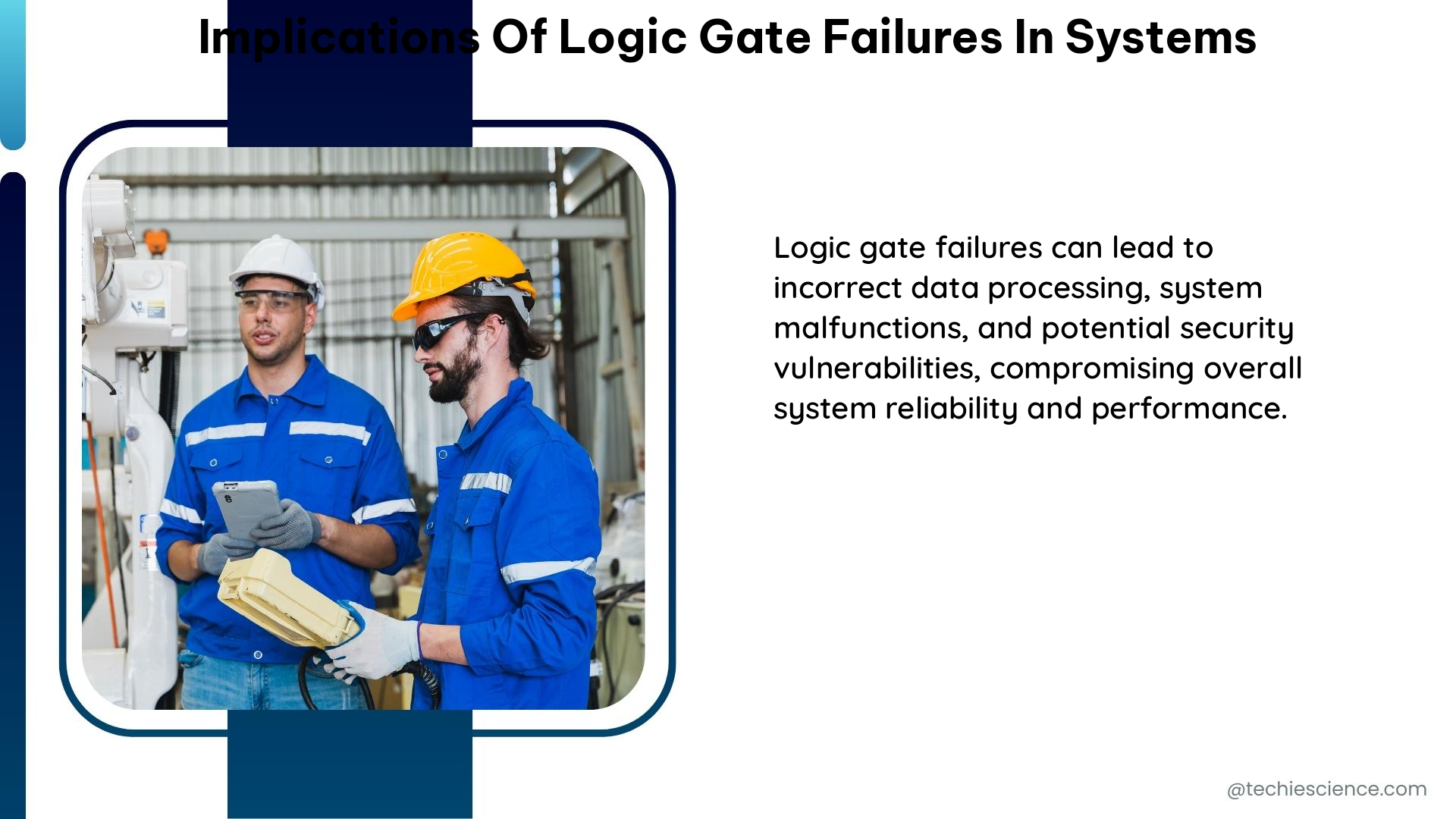The implications of logic gate failures in systems can be severe, leading to system malfunctions, incorrect outputs, and even safety hazards in certain applications. Understanding the impact of these failures is crucial for ensuring the reliability and integrity of complex electronic systems.
Fault Tree Analysis (FTA): Quantifying the Impact of Logic Gate Failures
Fault Tree Analysis (FTA) is a top-down approach used to determine the cause of a specific undesired event within a complex system. This technique employs various gate symbols, such as AND gates, OR gates, NOT gates, XOR gates, K/N gates, and INHIBIT gates, to model the relationships between input and output events.
AND Gates and Safety Systems
Consider an AND gate, such as the SN74LVC1G11, used in safety systems to connect two safety signals to one safety input on a microcontroller unit (MCU). The failure modes of this gate must be analyzed to ensure that all weaknesses in the system are considered safe. The output cannot be stuck at VCC when either input is low, as this could lead to a safety hazard. The failure mode distribution (FMD) report for this gate is crucial in understanding its weaknesses and ensuring system safety.
Numerical Analysis Methods for Gate Performance Quantification
To quantify gate performance, researchers have employed numerical analysis methods, such as those used in the frequency-domain ultrafast passive logic design for NOT and XNOR gates. These methods provide valuable insights into the behavior and performance of logic gates under various conditions.
Eye Diagram Analysis
The eye diagram, a graphical figure of merit for information processing systems, can be used to analyze gate performance. A closed eye diagram indicates that the device or system between the transmitter and the receiver is distorting bit levels of the input signal, potentially introducing errors in the received data.
Energy Consumption Comparison
Comparing the energy consumption of different logic gate methods can be challenging due to the underreporting of energy consumption by authors. However, using the work of Tucker and Hinton as a guide, researchers can normalize the energy consumption of optical gates to a reference clock of 100 GHz, enabling a more fair comparison across the literature.
Implications of Logic Gate Failures

The implications of logic gate failures in systems can be severe and far-reaching, affecting various aspects of system performance and reliability.
System Malfunctions
Logic gate failures can lead to system malfunctions, where the system behaves in an unexpected or unintended manner. This can result in incorrect outputs, data corruption, or even complete system failure, potentially causing significant disruptions in critical applications.
Incorrect Outputs
When logic gates fail, the system may produce incorrect outputs, leading to erroneous decision-making, faulty control signals, or inaccurate data processing. This can have serious consequences in applications such as industrial automation, medical devices, or transportation systems, where incorrect outputs can pose safety risks or lead to suboptimal performance.
Safety Hazards
In safety-critical systems, logic gate failures can have severe implications, potentially leading to safety hazards. For example, a stuck-at-VCC failure in an AND gate used in a safety system could bypass critical safety checks, exposing users or the environment to potential harm.
Mitigating the Risks of Logic Gate Failures
To mitigate the risks associated with logic gate failures, engineers and system designers can employ various strategies, including:
-
Comprehensive Fault Tree Analysis (FTA): Utilizing FTA to model the relationships between input and output events, identify potential failure modes, and construct a comprehensive fault tree to understand the complex interactions that can lead to undesired events.
-
Failure Mode and Effects Analysis (FMEA): Conducting FMEA to systematically identify and evaluate the potential failure modes of logic gates, their causes, and their effects on the overall system.
-
Redundancy and Fault Tolerance: Implementing redundant logic gates and fault-tolerant design techniques to ensure that the system can continue to operate safely and reliably even in the presence of logic gate failures.
-
Rigorous Testing and Validation: Performing extensive testing and validation procedures, including simulation, emulation, and physical testing, to identify and address potential logic gate failures before deployment.
-
Continuous Monitoring and Diagnostics: Implementing continuous monitoring and diagnostic systems to detect and respond to logic gate failures in real-time, enabling timely corrective actions and minimizing the impact on system performance and safety.
By understanding the implications of logic gate failures and adopting a comprehensive approach to mitigating these risks, engineers and system designers can ensure the reliability, safety, and performance of complex electronic systems.
References:
- IBM. (n.d.). What is Fault Tree Analysis (FTA)? – IBM. Retrieved from https://www.ibm.com/topics/fault-tree-analysis
- TI E2E Community. (2023, February 3). SN74LVC1G11: AND gate: Functional Safety FIT Rate, Failure Mode Distribution for safety system. Retrieved from https://e2e.ti.com/support/logic-group/logic/f/logic-forum/1192825/sn74lvc1g11-and-gate-functional-safety-fit-rate-failure-mode-distribution-for-safety-system
- NCBI. (2020, November 17). Frequency-domain ultrafast passive logic: NOT and XNOR gates. Retrieved from https://www.ncbi.nlm.nih.gov/pmc/articles/PMC7673018/
- Tucker, R. S., & Hinton, K. (2011). Energy consumption and energy density in optical and electronic signal processing. IEEE Photonics Journal, 3(5), 821-833.

The lambdageeks.com Core SME Team is a group of experienced subject matter experts from diverse scientific and technical fields including Physics, Chemistry, Technology,Electronics & Electrical Engineering, Automotive, Mechanical Engineering. Our team collaborates to create high-quality, well-researched articles on a wide range of science and technology topics for the lambdageeks.com website.
All Our Senior SME are having more than 7 Years of experience in the respective fields . They are either Working Industry Professionals or assocaited With different Universities. Refer Our Authors Page to get to know About our Core SMEs.